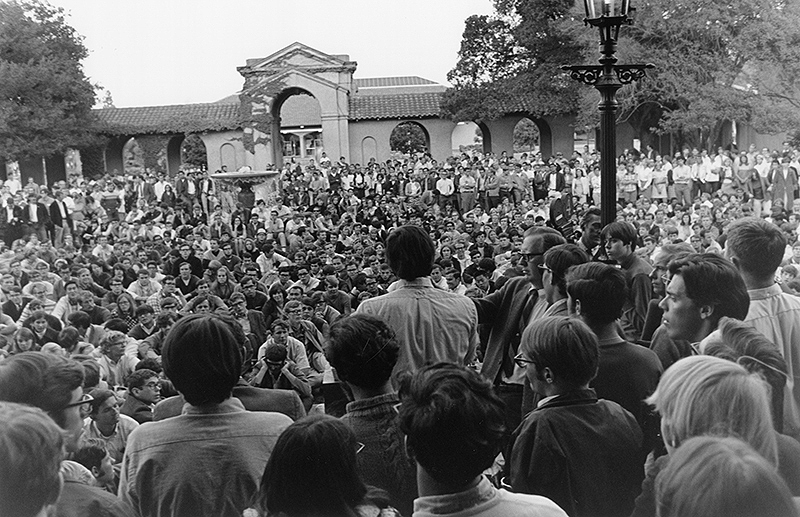History of Stanford
Changing Times & Campus
The post-war years were a time of tremendous growth and change as Stanford expanded its national reputation as a leading university. A record 8,223 students showed up for class in Fall 1947, including many former soldiers taking advantage of the G.I. Bill of Rights.
As all great universities, Stanford both reflected and acted upon the larger world. Stanford students and faculty were actively involved in the civil rights movements of the 1960s and 70s. They participated in the voter registration drives in the South, and in April 1964, the campus welcomed Martin Luther King Jr., who addressed an overflow crowd at Memorial Auditorium. The university became home in 1965 to the earliest known student group advocating civil rights for gays and lesbians.
Stanford also shared with other universities the political tensions and activities that came about as the result of the Vietnam War. The first antiwar rally took place in February 1965. The years 1968-1971 were marked by turmoil, including strikes and sit-ins; students and faculty were particularly concerned about ROTC training, CIA recruitment and Stanford’s role as a defense researcher.
Racial politics also rose to prominence during those years. In the aftermath of Martin Luther King’s assassination, students successfully demanded that more non-white students be recruited and admitted. The Program in African and African American Studies, established in 1969, was the first ethnic studies program at Stanford, and the first such program at a private institution in the U.S. Stanford also undertook an effort to attract Native Americans to the campus, which coincided with the discontinuation of the “Indian” as Stanford’s mascot. As at other universities, the movement to end apartheid in South Africa mobilized students over a period of a decade or more. The university eventually would divest many of its holdings in companies that did business in South Africa. In 1985, in a singular honor, Stanford was chosen to house the papers of Martin Luther King, Jr.
Women had formed part of Stanford’s student body from the very start, but neither they nor the female faculty had attained anything close to parity during the university's first decades. In fact, Jane Stanford had specified that no more than 500 female students ever be enrolled at one time. That was changed in the 1930s, when the Board of Trustees decided that the number could increase but that the proportion of men to women should remain constant. All limitations were removed in 1973. Feminist Studies was established as an interdisciplinary major in 1981, and the Center for Research on Women, today the Clayman Institute for Gender Research, opened in 1986.
As at other schools, traditional Western Civilization requirements came under fire in the 1980s in the so-called “culture wars.” At Stanford, the course was replaced in 1988 by a Cultures, Ideas and Values requirement, which set off a nationwide debate on the humanities canon. The discussion eventually led to the establishment of Introduction to the Humanities, a yearlong interdisciplinary course for freshmen which was offered until 2012. Other measures taken to ensure that Stanford undergraduates would have an educational experience akin to that of far smaller liberal arts schools included the establishment of Introductory Seminars, Sophomore College and a Vice Provost for Undergraduate Education.

